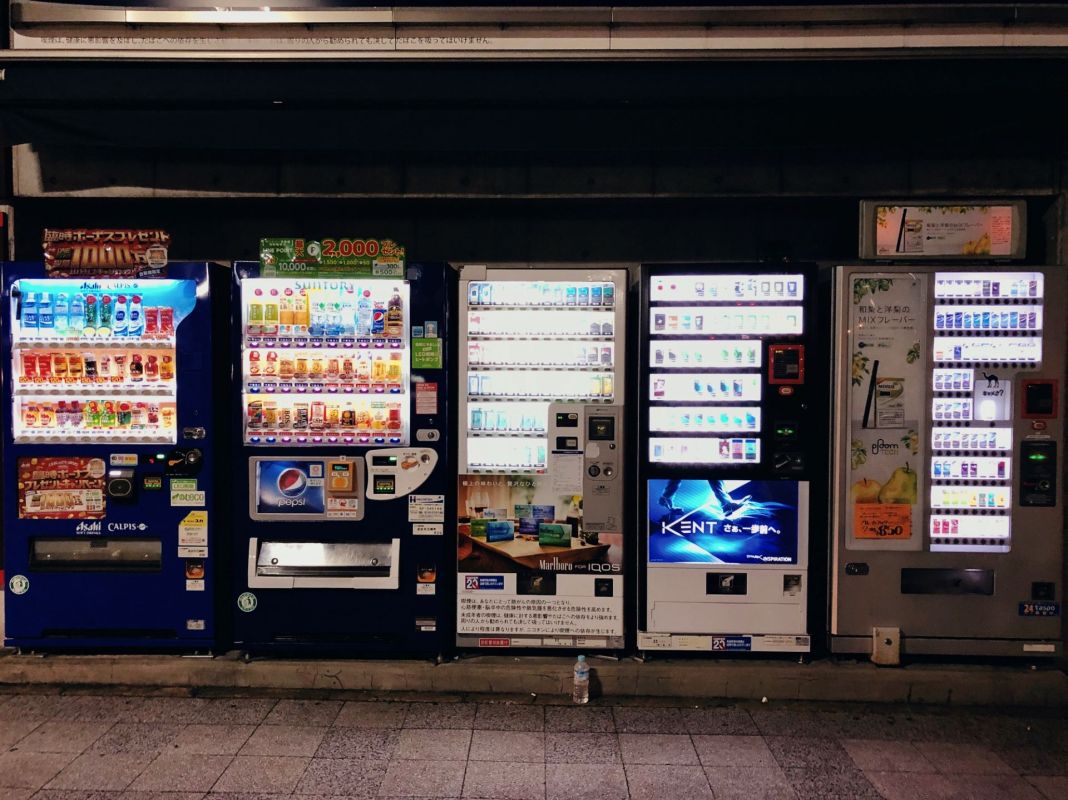The vending machine has become a modern aspect of Japanese culture. In Tokyo, for example, it's hard to walk a block without spotting several of them against a building.
Although the purpose of the vending machine can be summed up with one word, "convenience," one of Japan's leading drink-makers plans to give them an extra mission — pulling carbon dioxide (CO2) out of the atmosphere.
CO2 is the main gas released by human industrial activities that is heating up our planet.
Asahi Group refers to these machines as a possible "forest in the city," The Straits Times reports.
The new vending machines are currently in the process of being patented.
They will have a white powder-like substance made from calcium minerals. Once this substance absorbs a specific amount of CO2, it will be used for industrial purposes like producing fertilizer and creating algal sea beds.
According to the Japan Times, company spokesperson Yoshiie Horii said Asahi Group plans to experiment with the Kanto and Kansai regions, where they will install around 30 units.
This experiment aims to help the company become carbon neutral by 2050. Each machine is expected to absorb around 132 pounds of carbon dioxide, approximately 20% of the pollution it produces.
Carbon dioxide levels in the atmosphere are higher than they have been in at least 3 million years. In 2019 alone, humans dumped more than 40 billion tons of CO2 into the atmosphere.
In Japan, there are around 4 million vending machines. These machines sell all kinds of things, from toys to green tea.
Beverages make up a little over half of the vending machine market, as reported by the Japan Vending System Manufacturers Association (JVMA).
"The vending machine market is shrinking year by year and the market environment is difficult," Horii is reported as saying.
Even though vending machine vendors have managed to reduce the environmental impact of these machines by more than 60% in the past 20 years, they still consume a lot of electricity because they operate 24 hours a day.
Using the macines to absorb the planet-warming carbon pollution they create is definitely a step in the right direction.
The vending machine has become a modern aspect of Japanese culture. In Tokyo, for example, it's hard to walk a block without spotting several of them against a building.
Although the purpose of the vending machine can be summed up with one word, "convenience," one of Japan's leading drink-makers plans to give them an extra mission — pulling carbon dioxide (CO2) out of the atmosphere.
CO2 is the main gas released by human industrial activities that is heating up our planet.
Asahi Group refers to these machines as a possible "forest in the city," The Straits Times reports.
The new vending machines are currently in the process of being patented.
They will have a white powder-like substance made from calcium minerals. Once this substance absorbs a specific amount of CO2, it will be used for industrial purposes like producing fertilizer and creating algal sea beds.
According to the Japan Times, company spokesperson Yoshiie Horii said Asahi Group plans to experiment with the Kanto and Kansai regions, where they will install around 30 units.
This experiment aims to help the company become carbon neutral by 2050. Each machine is expected to absorb around 132 pounds of carbon dioxide, approximately 20% of the pollution it produces.
Carbon dioxide levels in the atmosphere are higher than they have been in at least 3 million years. In 2019 alone, humans dumped more than 40 billion tons of CO2 into the atmosphere.
In Japan, there are around 4 million vending machines. These machines sell all kinds of things, from toys to green tea.
Beverages make up a little over half of the vending machine market, as reported by the Japan Vending System Manufacturers Association (JVMA).
"The vending machine market is shrinking year by year and the market environment is difficult," Horii is reported as saying.
Even though vending machine vendors have managed to reduce the environmental impact of these machines by more than 60% in the past 20 years, they still consume a lot of electricity because they operate 24 hours a day.
Using them to absorb the planet-warming carbon pollution they create is definitely a step in the right direction.
Join our free newsletter for weekly updates on the coolest innovations improving our lives and saving our planet.









